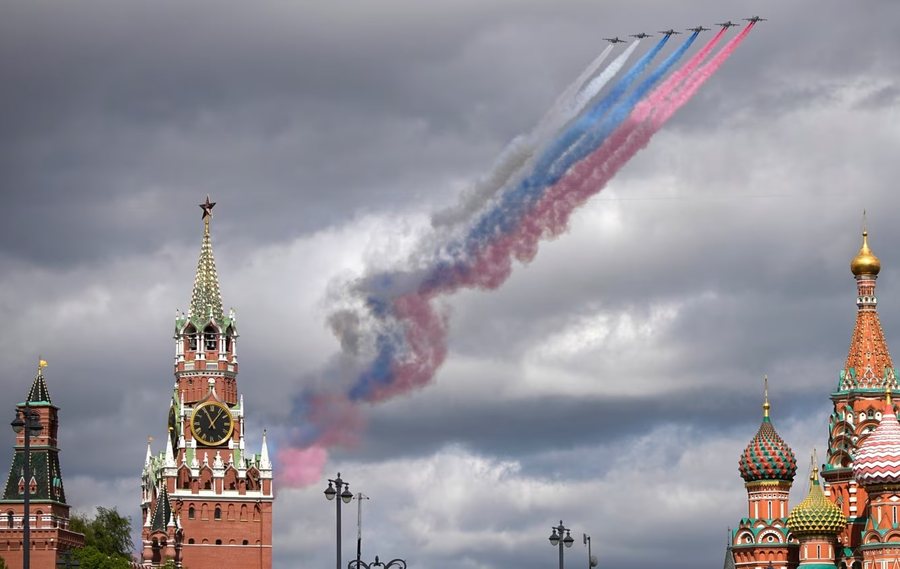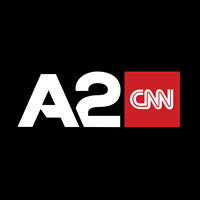
It is the most important holiday on the Russian calendar, the main event for the Kremlin's efforts to glorify the Soviet role in defeating Nazi Germany.
In recent years, the Victory Day parade in Red Square has also served as a stage for Russian President Vladimir Putin to glorify Moscow's war in Ukraine, as Russia's casualties - dead and wounded - have surpassed 750,000, according to Western estimates.
For Kremlin watchers, May 9 is an event of symbolic weight, offering an opportunity to see possible changes in Putin's worldview - now in his 26th year as the country's top leader - and in state policies in general.
This year in particular, on the 80th anniversary of the surrender of Nazi Germany and over three years since Russia began its invasion of Ukraine, reports A2.
“Victory in the Great Patriotic War is the cornerstone of Putin’s political mythology – the foundation of his entire version of world history,” Mikhail Zygar, a Russian journalist in exile and author, wrote in an essay. “The Kremlin has been preparing for this moment for months; it is the epicenter of the regime’s propaganda calendar.”
In this text you can learn what to expect on May 9th.
Which war exactly?
More than 27 million people – soldiers and civilians – lost their lives in the Soviet Union during what Russians call the Great Patriotic War. It was an unprecedented devastation and defeat of Nazism that has long been celebrated as a testament to the resilience of Russians, Ukrainians, Belarusians and other nations who suffered in that war.
Since he first became president in 2000, Putin has used these events to bolster his standing among veterans. He has also used them to criticize the West, downplaying the Allies' role in defeating the Nazis and criticizing the United States, in particular.
During his Victory Day speech in 2007, Putin indirectly attacked the US, comparing American policies to those of the Nazi Third Reich.
After launching the invasion of Ukraine in February 2022, Putin made sure that “neo-Nazis” were at the epicenter of his speeches, repeating the Kremlin’s baseless accusation to justify the aggression: that the country was ruled by a “Nazi junta.”
Who sits where?
According to the Kremlin, dozens of world leaders have pre-accepted invitations to attend the events in Moscow, although there are likely to be last-minute cancellations.
Several leaders from former Soviet republics, such as Belarus, Kazakhstan and Azerbaijan, are expected to be present, as well as leaders from Bolivia, Cuba, Venezuela, Laos, Brazil and other countries.
No leaders from the European Union are expected to attend the events in Moscow, with the exception of Slovak Prime Minister Robert Fico, who has previously made critical comments about Ukraine.
From Europe, the President of Serbia, Aleksandar Vučić, who arrived in the Russian capital on May 7, will also be present.
All eyes will be on Chinese President Xi Jinping, who has become a key ally for Moscow in its war against Ukraine.
Beijing has continued to buy Russian oil and gas, helping to finance Moscow's war and keep the Russian economy afloat. China has also made no public statements criticizing the Russian invasion.
“Xi’s presence in Moscow highlights the growing tension at the heart of Chinese foreign policy,” Patricia Kim, a fellow at the Brookings Institution in Washington, said in an analysis. “The strategic partnership with Russia is increasingly at odds with China’s broader ambitions to be perceived as a responsible global leader, a stabilizing alternative to what it sees as American instability and Western decline.”
It remains to be seen whether China will also send a military unit to march through Red Square, which would be a symbolic gesture of support for the Kremlin.
Display of military equipment
During the Cold War, Victory Day parades were rare events; the largest annual event was usually held in November, to commemorate the Bolshevik Revolution of 1917, often with a display of Soviet military technology.
Western analysts carefully examined the lengths and widths of missile tubes and the trucks used to launch the missiles, to understand whether Moscow had the upper hand in the arms race.
More demonstrative displays of military equipment have become the norm over the past decade, especially as the Kremlin has invested heavily in modernizing and rearming the military.
Starting with the parade on Red Square in 2015, officials unveiled a new main battle tank, called the Armata T-14. Although it has been shown in public, the vehicle has not been used in the war in Ukraine.
A year later, officials paraded a new long-range ballistic missile, the RS-24 Yars, through Red Square.
Since the 2022 invasion, new weaponry has appeared less frequently on Red Square – a fact that is largely related to the heavy losses in military equipment that Russia has suffered.
It remains to be seen what weaponry will slowly parade across the cobblestones of Red Square, or fly over it. It is also worth watching whether Russian officials will display any captured Western equipment – such as Bradley fighting vehicles – as a way to mock the West.
Who's afraid of Ukrainian drones?
In the run-up to May 9, Ukraine carried out major drone strikes on Russian targets, including one on May 6 that was the largest in recent months.
Kiev and Moscow have been hitting each other for months – mostly with drones, but also with missiles – despite US-led efforts to reach a ceasefire or a broader halt to the fighting.
Last month, Putin called for a three-day ceasefire to coincide with Victory Day. Ukrainian President Volodymyr Zelensky responded with a proposal for a 30-day ceasefire, in line with a US initiative in March, which was accepted by Kiev but rejected by Moscow.
It is unclear whether Russian commanders will actually stop the fighting. Kremlin spokesman Dmitry Peskov told reporters that Putin's order remains in effect, but added that Russia will respond if Ukrainian forces open fire.
Meanwhile, Zelensky and other Ukrainian officials said it is not Kiev's responsibility to guarantee the security of dignitaries visiting Moscow. The head of Ukraine's military intelligence warned guests at the parade in Moscow to "take earplugs."
“Regarding all the countries that have traveled or are traveling to on May 9, our position is very simple,” Zelensky said on May 3. “We cannot be held responsible for what happens on the territory of the Russian Federation. The Russians are the ones who guarantee your safety, and therefore we will not give any guarantees.”
Russian officials warned residents of the Moscow region not to set off fireworks this week. Meanwhile, telecommunications service providers announced that internet speeds would be slowed, likely to thwart possible drone flights or remote explosions.
"It makes no sense to hit Red Square," said Ivan Preobrazhensky, a political commentator based in Prague.
Ukrainian drones could reach Moscow, he told Current Time, "but the problem is that Russian propaganda would then present it as an assassination attempt on foreign leaders who will participate in the parade, which in the current circumstances would not be in Ukraine's interest."
A comprehensive strategic partnership
Finding it impossible to secure a decisive victory, Moscow has turned elsewhere to provide men and military equipment to continue the war: mainly to North Korea.
In June last year, Putin traveled to Pyongyang to sign a new mutual defense treaty. A month earlier, US officials said North Korea had sent hundreds of thousands of artillery shells, along with ballistic missiles.
By the end of 2024, nearly 11,000 North Korean soldiers were deployed to fight alongside Russian troops, mostly in the border region of Kursk, which Ukraine captured last summer, embarrassing the Kremlin. Russian commanders have credited these troops with driving Ukrainian forces out of Kursk.
There are other signs of deepening cooperation. Injured Russian soldiers have reportedly been sent to North Korea for treatment and recovery. Thousands of North Korean workers have been sent to Russia, mainly in the Far East, to work in construction and other heavy industries, where there is usually a shortage of labor.
Civilians from North Korea have also begun appearing at public ceremonies.
Ahead of Victory Day events, a delegation of North Korean children dressed in military uniforms joined hundreds of Russian children and youth in marching during a military parade in the port city of Vladivostok./ REL
(A2 Televizion)











